- Home
- Conn Iggulden
The Dangerous Book for Boys Page 15
The Dangerous Book for Boys Read online
Page 15
A few months later, in early 1836, General Santa Anna decided to march in Texas and put the rebellion down once and for all. He led the Mexican army over mountains, through snowstorms, and across the Rio Grande. Santa Anna left Mexico with around six thousand troops, but not all of his soldiers made it. The terrible weather was severe enough to kill men and horses, but the Mexican army kept going.
In order for Santa Anna and his army to reach the middle of Texas, they had to pass through San Antonio de Bexar, a village with a converted church that the locals called Misión San Antonio de Valero. We call it the Alamo. The Alamo had been a mission for many years, and it was certainly not designed for any military use, but the militia in Texas had equipped the Alamo with eighteen cannons. You could not find a larger group of cannons west of the Mississippi River, which meant that the Mexican forces would not be able to pass by and put down the revolt unless they captured the mission.
There were around two hundred men in the Alamo, commanded by William Barret Travis and James Bowie. Jim Bowie is well known as a courageous figure in Texan lore. He grew up in Louisiana, but he came to Texas to join the revolution after getting into heaps of adventures. He worked with the French pirate Jean Lafitte, searched for silver mines, and got a reputation for having a red-hot temper.
Not all of the soldiers defending the Alamo were from Texas—and not all of them were soldiers. Bowie was there with a group of unofficial volunteers. The New Orleans Greys were there for the siege of Bexar, and more than twenty of them stayed behind to fight for the Alamo. On February 8, the Tennessee Mounted Volunteers arrived with the legendary Davy Crockett, who is known as the “King of the Wild Frontier.”
On February 24, Santa Anna and the Mexican army arrived with infantry and cavalry. They had British Brown Bess muskets and were trained to use them. They also had a few six-pound cannons. The army was professionally trained, with some European mercenaries among the officers. The general had fought in the Mexican war of independence.
Before the fighting began, Santa Anna raised a red flag to send a message to the colonists in the post that anybody who was captured would be killed.
The siege of the Alamo lasted for thirteen days. The Mexican army was waiting for cannons strong enough to break through the walls. There were women and children inside the Alamo during the siege. Thirty-two Texan soldiers finally made it past Mexican lines to come and help the people in the Alamo, but it wasn’t enough.
On March 2, Texas declared their independence from Mexico. On March 6, the Mexican army attacked the Alamo. The fighting started at 6:30 a.m. and ended an hour and half later. A few of the men who had not been killed in the fighting were executed. Twenty women and children and two slaves were released. The flag of the New Orleans Greys was captured by the Mexican army. You can view it at the National Historical Museum in Mexico City.
Santa Anna’s army was finally overwhelmed later in the war at the Battle of San Jacinto. The men who defeated them rallied to calls of “Remember the Alamo!”
7. THE BATTLE OF GETTYSBURG
July 1–3, 1863
The Battle of Gettysburg, a major battle of the American Civil War, lasted for only three days in 1863, but it will be remembered forever as the bloodiest fight of the war—and a turning point for the ultimately victorious North.
General Robert E. Lee and his Army of Northern Virginia were on a quest to invade the North, with seventy-five thousand soldiers. Lee’s army was broken up into three groups, led by Longstreet, Ewell, and A. P. Hill. J.E.B. Stuart led the cavalry. After an incredible success in May at Chancellorsville, which was called Lee’s “perfect battle” because his army won against a force twice their size, Lee and his men marched through the Shenandoah Valley to invade the North for a second time. Their goal was to reach Harrisburg, Pennsylvania or even Philadelphia to convince Northerners to let go of the war.
Abraham Lincoln, the president of the United States, sent Major General Joseph Hooker and the Union army after the Confederates. Just before the Battle of Gettysburg, however, Hooker was replaced by Union major general George G. Meade.
On July 1, at dawn, shots were fired over Marsh Creek when the armies met at Gettysburg, where Lee’s troops were assembled. The northwest of Gettysburg is marked by low ridges, which were defended by Union cavalry and infantry. But these corps were soon attacked by two big Confederate groups approaching from the north and northwest, which broke through the Union defense and sent the soldiers back through town to the hills in the south.
By the second day, the bulk of both armies met. The Union side was organized like a fishhook, and the Confederates attacked on the left and right sides. Fighting broke out at a few locations, including Little Round Top, Devil’s Den, Peach Orchard, Culp’s Hill, and Cemetery Hill. Little Round Top is one of two rocky hills to the south of Gettysburg, and the battle there has been called the highlight of the Union army’s defense on the battle’s second day. The battle at Little Round Top ended in a famous bayonet charge; there were significant losses on the battlefield, but the Union army held strong.
July 3 saw action on Culp’s Hill. Cavalry charged to the east and south, and 12,500 Confederate soldiers advanced on Cemetery Ridge, which rises about forty feet and is barely two miles long. The Confederate army suffered huge losses at Pickett’s Charge, which was a disastrous attempt to strike the Union center.
Lee’s army retreated all the way back to Virginia—but after three days of fighting, fifty thousand Americans were dead.
President Lincoln went to Gettysburg that November and made a speech at the dedication ceremony for the Gettysburg National Cemetery. That speech, known as the Gettysburg Address, honored the fallen soldiers and called for equality for American citizens. It is Lincoln’s most famous speech, and considered one of the greatest speeches in American history.
* * *
THE GETTYSBURG ADDRESS
FOUR SCORE AND SEVEN YEARS AGO, our fathers brought forth on this continent a new nation: conceived in liberty, and dedicated to the proposition that all men are created equal.
Now we are engaged in a great civil war, testing whether that nation, or any nation so conceived and so dedicated, can long endure. We are met on a great battlefield of that war.
We have come to dedicate a portion of that field as a final resting place for those who here gave their lives that that nation might live. It is altogether fitting and proper that we should do this.
But, in a larger sense, we cannot dedicate—we cannot consecrate—we cannot hallow—this ground. The brave men, living and dead, who struggled here have consecrated it, far above our poor power to add or detract. The world will little note, nor long remember, what we say here, but it can never forget what they did here. It is for us the living, rather, to be here dedicated to the unfinished work which they who fought here have thus far so nobly advanced.
It is rather for us to be here dedicated to the great task remaining before us—that from these honored dead we take increased devotion to that cause for which they gave the last full measure of devotion—that we here highly resolve that these dead shall not have died in vain—that this nation, under God, shall have a new birth of freedom—and that this government of the people, by the people, for the people, shall not perish from the earth.
* * *
First Aid
ACCIDENTS ARE GOING TO HAPPEN. You can’t spend your life worrying about them or you’d never get anything done. However, using common sense and taking a few simple precautions is well worth a little of your time. Really, everyone should have a basic knowledge of first aid. If you were injured, you’d want someone close to you who doesn’t panic and knows what to do. It’s not being dramatic to say a little knowledge can make the difference between life and death.
When dealing with more than one casualty, a decision has to be made about which person to treat first. This process is called “triage.” One rule of thumb is that if someone is screaming, they are clearly alive, conscious and almost certa
inly in less danger than someone silent and still.
These are your priorities:
Breathing and heartbeat
Stop bleeding
Bandage wounds
Splint fractures
Treat shock
When dealing with blood and wounds, there is a risk of AIDS infection. Wear gloves if you have them, or put plastic bags over your hands. Avoid touching your mouth or face with bloody hands. Wash thoroughly as soon as possible. This advice is almost always ignored in high-stress situations, but it could save your life.
When you approach an injured person, make sure whatever hurt them isn’t likely to hurt you—falling debris on a building site, for example. If there is an imminent threat, move the patient before treatment. Weigh the risk of spinal injury against the immediate danger. If they have been electrocuted and the current is still running, stand on something dry and nonconductive and use a stick to heave them away from the source.
If you do have to move them, avoid twisting motions that could make spinal injuries worse. Pull by the ankles until they are clear.
ARE THEY BREATHING?
If they are breathing, turn them on their side and bend one leg up in support. This is the “recovery position.” It helps to prevent choking caused by vomit or bleeding.
If breathing is poor, use a finger to remove any obstructions from the mouth and throat. Check that they have not swallowed their tongue, and if they have, pull it back into the mouth. If breathing is blocked, put them onto their back, sit astride them, place your hands just above their navel, and thrust upward into the rib cage. If this does not work, grasp them around the chest under the armpits from behind, joining your hands in front if you can. Then grip hard, compressing their chest. This is the “Heimlich maneuver.”
Once the blockage is clear, if they are still not breathing, start artificial resuscitation.
Note that babies require special delicacy. If a baby stops breathing, support them facedown on your forearm. The pressure alone is enough in some cases, but if not, press three or four times between the shoulder blades with the heel of your hand. If there is still no response, support the head and turn the baby face up, then use just two fingers to press down on the chest four times. Repeat this action. Finally, cover the baby’s mouth and nose with your mouth and breathe into their lungs.
IS THE HEART BEATING?
To take the pulse at the wrist, press your fingers on the front of the wrist, just below the thumb at the lower end of the forearm. To take the pulse at the neck, turn the face to one side and press your fingers under the jaw next to the windpipe.
The normal pulse rate for the relaxed adult is 60–80 beats per minute. For a child it is 90–140 beats per minute. In high-stress situations, it can spike as high as 240, though a heart attack is very close at that point.
Use your watch to count the beats in thirty seconds and then double it. If you cannot feel a pulse and the pupils of the eyes are much larger than normal, start cardiac compression.
ARTIFICIAL RESUSCITATION
The first five minutes are the most crucial, but keep going for up to an hour while you wait for emergency services. This can be exhausting, so take turns if there are more of you.
“THE KISS OF LIFE”
Lay the patient on their back.
Tilt the head back.
Hold jaw open and nostrils closed.
Check that airway is clear with a finger.
Place mouth over patient’s mouth and blow firmly. It takes more effort than you might expect to inflate someone else’s chest.
Watch for the chest to rise, and take your mouth away. Repeat this five or six times in succession. After that, get a rhythm going of one breath every five seconds. After ten or twelve, begin cardiac compression.
With a baby, put your mouth over the nose and mouth and use short gentle breaths twenty times a minute. A baby’s lungs can be damaged by too forceful treatment.
With an animal, such as a dog, hold the mouth closed with both hands and blow into the nose to inflate the chest. Whether you do this will of course depend on how much you love the dog. Use a strong mouthwash afterward.
CARDIAC COMPRESSION
First thump hard onto the center of the chest and check to see if the heart has restarted.
Place heel of hands on the breastbone.
With arms straight, push down about 1½ inches (4 cm).
Do this four or five times between breaths, counting aloud.
Never try compression when the heart is beating, even if it is very faint. This could stop the heart.
Check for a pulse after one minute and then at three-minute intervals. Do not give up.
As soon as a pulse is detected, stop compressions but continue mouth-to-mouth until the patient is breathing normally, then put them into the recovery position.
BLEEDING AND INJURY
If anything is embedded in the wound, you will need a “doughnut” bandage. Roll a piece of cloth into a tube, then join the ends to make a doughnut shape. Put this around the wound before bandaging so the bandage won’t press glass or other fragments in deeper.
An adult has up to eleven pints of blood. Losing three of them will cause unconsciousness. Even one pint can cause someone to faint, which is why blood donors are asked to sit down and have a cookie and orange drink after donating.
Immediate steps must be taken to stop the flow of blood. Pressure is the key. It slows down the blood flow enough to allow the body’s own repair mechanisms to start vital clotting. Apply pressure for five to fifteen minutes and don’t keep checking it. Talk to the patient as you do this, keeping an eye on their state of mind and alertness. If you have no bandage, make a pad of a shirt or any other cloth.
Raise the injured part above the heart to aid clotting. Squeeze the edges of a gaping wound together before applying the pad.
Apply a tourniquet only if the patient is likely to bleed to death. Tie a belt or cord above the wound, tightening it until the blood flow slows. You cannot keep this on for more than a few minutes without causing permanent damage, so loosen it at intervals.
If you don’t have anything to tie it, apply pressure on the main artery above the wound. To do this, find a pulse in the side of the jaw or wrist, underside of upper arm, crook of the elbow, top of the shoulder (clavicle), the temples on the side of the head, top of the thighs by the groin, back of the knees, and the front of the ankles. Find the closest one and press it hard into the bone. It is a good idea to try to find these on yourself, before you try to do it in real life with someone screaming in your ear.
Soap is an antiseptic and can be used to wash a wound to avoid infection. Hot water or boiled wine will also sterilize the site, though the application will be extremely painful. In an emergency, fresh urine will also work, as it is sterile.
Serious internal bleeding may be shown by cold clammy skin, a rapid pulse, restlessness and rapid bruising under the skin. Try to minimize shock by elevating their legs, keeping them warm and getting help fast.
BREAKS
If someone fractures a bone in an accident it may be necessary to splint the damaged limb before trying to move them. This is done by placing two pieces of wood around the damaged area and securing them with rope or a belt.
A wrist or a dog’s leg can be secured in a rolled-up magazine and held with shoelaces. Damaged arms will need to be put in a sling and secured against the body.
A sling can be formed by a large triangular bandage that folds over the arm and is secured at the neck. If it’s a broken forearm, you could tie the wrist, then take the cloth around the neck and back down. A simple loop would work, but the arm will not be secure.
BURNS
Burns destroy the skin and carry a risk of infection. Run cold water over a burn for at least ten minutes. Try not to break any blisters that form. Give the injured person lots to drink. Remove any jewelry and clothing from the burned area. Do not apply ointments to the skin. Cover with a loose bandage if you have one, or if
not, a plastic bag. Put dressings between burned fingers and toes to stop them from sticking together.
SHOCK
This can occur after any serious accident and can be fatal. The symptoms are loss of color from the lips, dizziness, vomiting, cold and clammy skin, and a rapid pulse.
Reassure the patient and talk to them. If they can talk, ask them their name and then use it often. Keep them warm and check their breathing and pulse. Lay them down and elevate their legs. Be ready to give mouth-to-mouth and cardiac compression if they become unconscious. Hot sweet tea is useful if they are conscious and alert. Never leave a shock victim on their own, however.
Staying calm is most important for your own safety and other people who may be relying on you. It helps to prepare. When the injury occurs, the first thing you should do is take a deep breath and reach for the first-aid kit you have prepared long before. Remember the ABC of “Airway, Breathing, Compression” and check one at a time.
Make sure you have considered methods of contact in the event of an emergency. A cell phone is a good idea, but is it in a waterproof bag? Is it charged? Remember that the best captains look after their men.
NAUSEA
Nausea from some external cause, like car sickness, seasickness or morning sickness, can sometimes be eased with an acupressure point in the wrists. To find it, lay the other hand at right angles to the wrist, as shown in the diagram.
The point lying underneath the index finger between the first and the second joints can relieve nausea after about five minutes of pressing. It is possible to have each hand press on the other’s nausea point. It does not work for everyone, but it can be very useful to know.

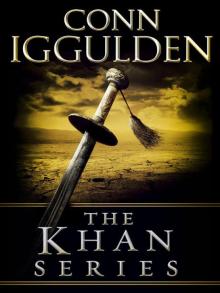 The Khan Series 5-Book Bundle
The Khan Series 5-Book Bundle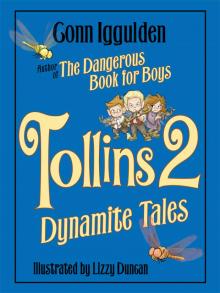 Tollins 2: Dynamite Tales
Tollins 2: Dynamite Tales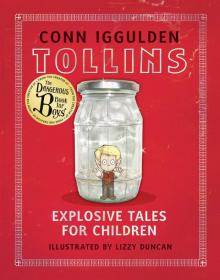 Tollins: Explosive Tales for Children
Tollins: Explosive Tales for Children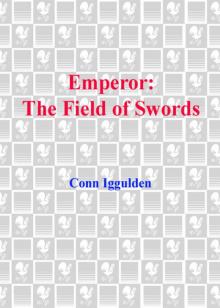 The Field of Swords
The Field of Swords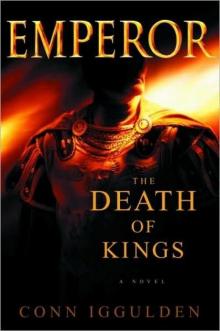 The Death of Kings
The Death of Kings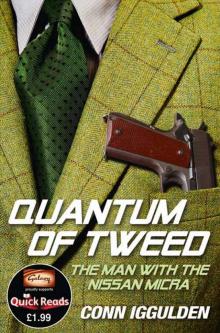 Quantum of Tweed: The Man With the Nissan Micra
Quantum of Tweed: The Man With the Nissan Micra Bones of the Hills
Bones of the Hills Genghis: Birth of an Empire
Genghis: Birth of an Empire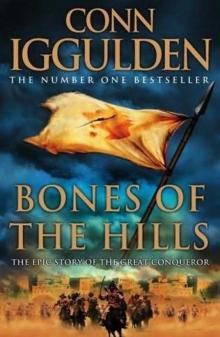 The Gates of Rome
The Gates of Rome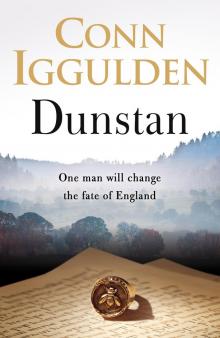 Dunstan
Dunstan Fig Tree
Fig Tree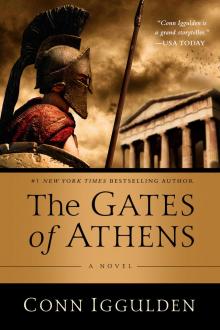 The Gates of Athens
The Gates of Athens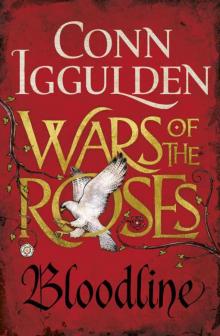 Stormbird
Stormbird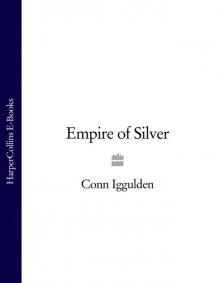 Khan: Empire of Silver
Khan: Empire of Silver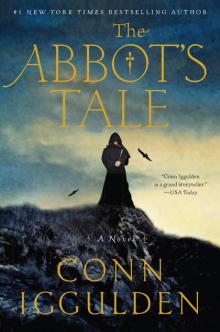 The Abbot's Tale
The Abbot's Tale Gengis: Lords of the Bow
Gengis: Lords of the Bow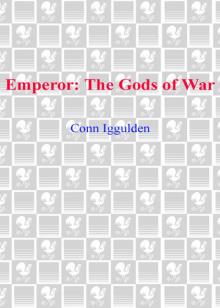 The Gods of War
The Gods of War Blackwater
Blackwater Ravenspur: Rise of the Tudors
Ravenspur: Rise of the Tudors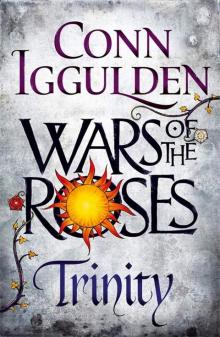 Wars of the Roses: Trinity (War of the Roses Book 2)
Wars of the Roses: Trinity (War of the Roses Book 2) The Gods of war e-4
The Gods of war e-4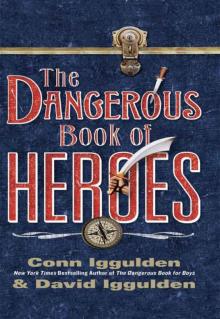 The Dangerous Book of Heroes
The Dangerous Book of Heroes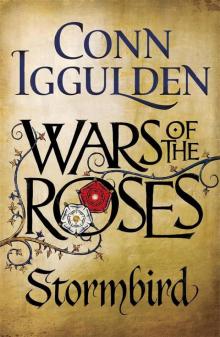 Stormbird wotr-1
Stormbird wotr-1 Emperor: The Death of Kings
Emperor: The Death of Kings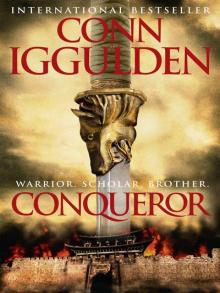 Conqueror (2011) c-5
Conqueror (2011) c-5 The Dangerous Book for Boys
The Dangerous Book for Boys Genghis Lords of the Bow
Genghis Lords of the Bow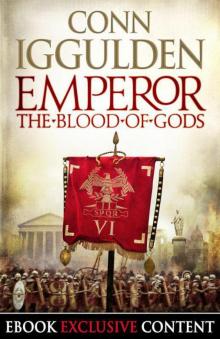 Emperor: The Blood of Gods (Special Edition) (Emperor Series, Book 5)
Emperor: The Blood of Gods (Special Edition) (Emperor Series, Book 5)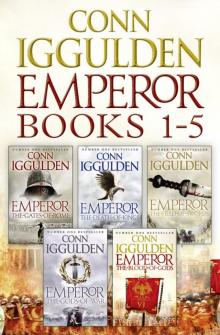 The Emperor Series: Books 1-5
The Emperor Series: Books 1-5 Lords of the Bow c-2
Lords of the Bow c-2 Lords of the Bow
Lords of the Bow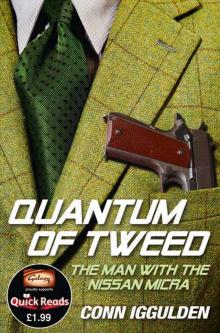 Quantum of Tweed
Quantum of Tweed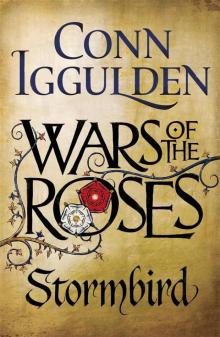 Wars of the Roses 01 - Stormbird
Wars of the Roses 01 - Stormbird Empire of Silver c-4
Empire of Silver c-4 Birth of an Empire
Birth of an Empire Conqueror (2011)
Conqueror (2011)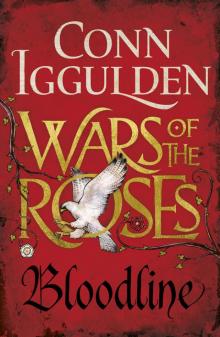 Wars of the Roses: Bloodline: Book 3 (The Wars of the Roses)
Wars of the Roses: Bloodline: Book 3 (The Wars of the Roses) Bones Of the Hills c-3
Bones Of the Hills c-3 Empire of Silver
Empire of Silver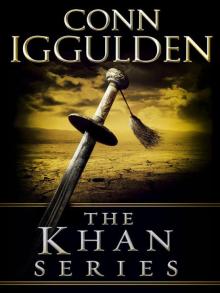 The Khan Series 5-Book Bundle: Genghis: Birth of an Empire, Genghis: Bones of the Hills, Genghis: Lords of the Bow, Khan: Empire of Silver, Conqueror
The Khan Series 5-Book Bundle: Genghis: Birth of an Empire, Genghis: Bones of the Hills, Genghis: Lords of the Bow, Khan: Empire of Silver, Conqueror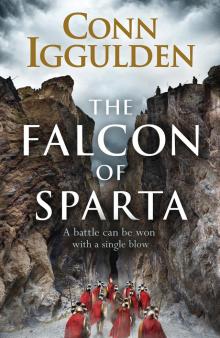 The Falcon of Sparta
The Falcon of Sparta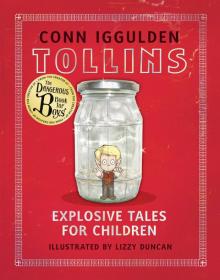 Explosive Tales for Children
Explosive Tales for Children